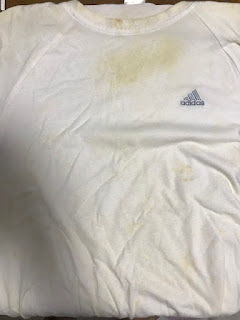The following tax reliefs are applicable to me:
- Earned income
- NSman
- Parents care
- CPF mandatory contribution
After all the tax reliefs above which sum up to at least $40k, my highest income bracket is still in the 7% range.
Supplementary Retirement Scheme (SRS) encourages Singaporeans to put more into retirement savings with their money locked away until they reach the statutory retirement age. Withdrawing before the retirement age will incur a penalty.
I thought hard about it and realised that since I could invest the SRS money and save $15,300 x 7% = $1071 worth of tax annually at the same time, why not? $1071 compounded at 9% annually can give you ~$14,000 at the end of 30 years!
I most likely will not touch the $15,300 (SRS contribution limit) in the near foreseeable future hence I am alright with it being locked away invested in stocks for the next 3 decades. I have more than sufficient cash and insurance to tide any emergency.
There's really no difference investing for the long-term between using an SRS and non-SRS account.
My only regret is that I did not start SRS contribution a few yrs back... And also unlike the parents care relief, it's not possible to backdate your SRS contribution to save on taxes in previous years.
If the government allowed optional contribution to CPF OA as a tax relief, I would have done it instead, as CPF monies can always be withdrawn tax-free when you retire and be used to pay for housing. I feel that it is safer to contribute to CPF than SRS as there may be adverse changes to SRS policies 30 years later.
How much to contribute?
Based current stats, one can withdraw an annual amount of $40,000 for a max of 10 years tax-free from an SRS account upon retirement. Withdrawing $40,000 is tax-free as only 50% of the withdrawn amount, which is $20,000, is taxable and this $20,000 in turn falls below the threshold for taxable income. Hence one can afford to accumulate a max of $400,000 in his SRS account without incurring any taxes. This is also assuming the person does not have any other income when he retires.
Assuming an annual return of 9% for 30 years, one will only need about $30,000 in his account today for compounding to $400,000. With a lower annual return of 5%, one will need about $92,000 instead.
With this in mind, it is important that we do not over-contribute as we may end up eroding the tax savings in the future. This also brings to mind the usefulness of an SRS account. Based on a decent annual return, one can only make 2 to 6 annual contributions at the current limit of $15,3000. Any further contributions in one's lifetime may cause him to exceed $400,000, thus eroding the tax savings.
The above calculations should serve as a guideline only as the personal income tax rate will change over time. One has to review his SRS account annually and make any necessary adjustments to achieve an optimal outcome.
.jpg)


